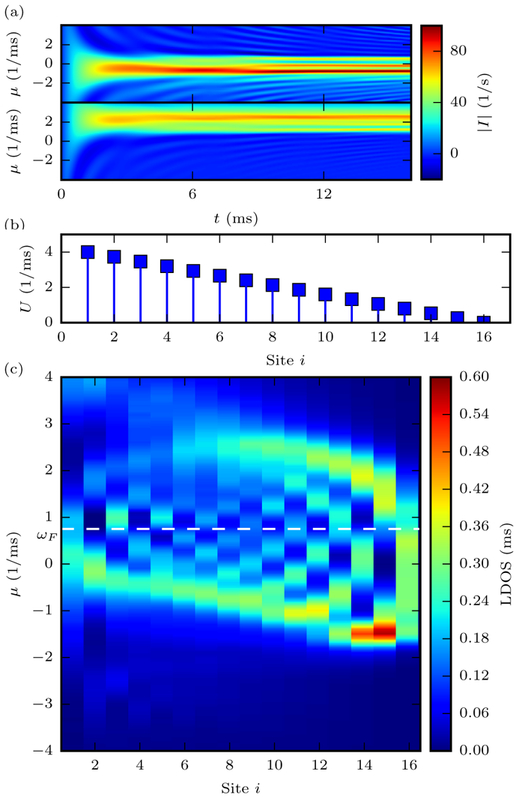FIG. 5.

Scanning-mode applied to an inhomogeneous system. (a) The time-dependent current shows the formation of a steady-state flow into when attached to the center of . (b) has an inhomogeneous interaction profile: a linear decrease from U = 4 ms−1 on one end to U = 0 ms−1 on the other. (c) The LDOS for occupied and unoccupied states as a function of frequency offset μ and contact lattice position i. The weakly-interacting region of the system allows more particles to occupy lower frequency states, while the more strongly-interacting side forces the open states well beyond the Fermi level. In addition, a superimposed even-odd effect is visible, which is due to the finite size of the lattice, creating oscillations from the boundary.
